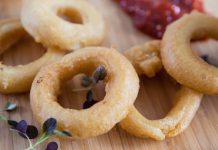Cryotherapy is the use of extreme cold to treat medical conditions by destroying abnormal or diseased cells.
How is Cryotherapy done?
Cryotherapy commonly uses liquid nitrogen as the source of cold. Nitrogen is a naturally occurring gas that can be artificially cooled into a liquid form. This requires very low temperatures. This type of treatment is used for a number of conditions, such as:
- tumors or cancer, especially those of the skin, cervix, eye, and brain. This treatment is also being used for other cancers, such as prostate cancer and liver cancer.
- certain early changes in the skin that might signal possible cancer. Actinic keratosis, a skin condition caused by sun exposure, can be treated with cryotherapy.
- cervical dysplasia, or abnormal precancerous cells in a woman’s cervix that can lead to cancer of the cervix
- warts, including genital warts from human papilloma virus, or HPV
- acne
- hemorrhoids, which are enlarged veins in the rectum
- certain types of chronic pain or nerve irritation, such as a condition called trigeminal neuralgia
- other common skin lesions, such as skin tags, hemangiomas, or seborrheic keratoses
- a tear in the back part of the eye, called a retinal tear or retinal detachment
- bleeding during standard surgery
For many lesions, liquid nitrogen is applied with a cotton-tipped applicator. A spraying device can also be used. The nitrogen is placed on the lesions until they are frozen and destroyed.
For internal tumors or cancer, liquid nitrogen is run through an instrument called a cryoprobe. This probe is placed in contact with the lesion. The doctor uses special imaging tests, such as ultrasound or a CT scan, to guide the probe. This helps prevent damage to nearby tissue. Some tumors or cancers may need a cycle of treatments. In these cases, the tumor is frozen, allowed to thaw, and then refrozen.
Cryotherapy offers some advantages over other methods of treatment. It is less invasive than regular surgery. It may eliminate the need for cuts in the skin. In other cases, only a small skin incision is needed so that a probe can be inserted into the body. Pain, bleeding, and other risks of surgery are reduced. It is often less expensive than other forms of surgery. The person often has a shorter recovery time.
For individuals with cancer, cryotherapy can be added to other standard treatments. This therapy may also be offered to a person whose cancer hasn’t responded to normal treatments.
Cryotherapy, like almost all treatments, has side effects. However, they may be less severe than the side effects of regular surgery. The main risk is damage to surrounding healthy tissue. This can be quite serious, such as in brain surgery, when the healthy tissue is very important. Skin irritation, damage, and infection can occur when this therapy is used to treat skin conditions.
Article type: xmedgeneral














































